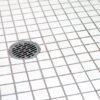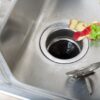Category: Winter Plumbing

Plumbing Checklist for Snowbirds
In the weeks leading up to your migration south, there is much to be done. Shopping, packing, and a much-needed hair appointment (for some) make the checklist. As you prepare for your annual trip, make sure your home’s plumbing makes the list, too. Use this checklist to help prevent plumbing disasters while you’re away.
Set the Thermostat
Many homeowners try to save money in the winter by lowering the thermostat, but remember that the risk of frozen pipes in exterior walls is very high when you crank down the temperature. If you plan on being away for an extended period, it’s recommended to set the thermostat no lower than 55 degrees.
Protect Your Sump Pump
Neglecting the sump pump can mean coming home to a flooded basement. To ensure a dry basement and a stress-free transition back from vacation, clear out any debris in the sump pit and keep the pump plugged in (but be sure to remove the discharge hose to prevent freezing during the winter). For more protection, consider having a battery backup and an extra discharge hose handy in case of a power outage.
Turn Off the Main Water Valve and Drain Water
Water damage from a gushing pipe is one of the biggest concerns for homeowners leaving their house vacant in the winter. To prevent this, first locate and shut off the main water valve. Then, turn on all the faucets around the house to drain all water from the pipes. To ensure water-free pipes, you can even leave them open until you return home. If you want to take your pipe protection to the next level, you can use antifreeze to prevent frozen toilets. Once your pipes are completely drained, flush your toilet until there is no more water left. Then, fill it with antifreeze.
Prepare Outdoor Plumbing
Protecting the outside of your home is just as important as the inside. After the hoses have been drained and disconnected, remember to close the shut-off valve. This may be separate from the main valve for outdoor spigots, so make sure you consult a professional if you have questions.
Rely on Friends to Monitor
Once you’ve done all your preparation, make a backup plan with professionals or neighbors. Consider talking to your plumber about remote monitoring systems for safety and peace of mind. If you’re comfortable doing so, it’s a good idea to give a family member, neighbor, or friend a spare key so they can check on the home and help in case of an emergency.
When the time comes to head south for the winter, just remember to prepare! Using our plumbing checklist for winter trips will help keep your home protected until you return. Need help prepping your home for winter or have questions? Your friends at Robillard Plumbing are here for all your plumbing needs. Contact us to learn more.
Read More
Tips to Avoid Common Winter Plumbing Issues
Between an abundance of cooking, baking, and many days of hosting, the holiday season is the most inconvenient time to experience plumbing issues. But with a few tips and tricks, you can avoid them altogether. Continue reading our blog to steer clear of the most common winter plumbing issues.
Leaking Garbage Disposal
A leaking garbage disposal is one of the easiest repairs we do. However, if a leak is left for too long, this easy fix can lead to a much larger problem that requires a full disposal replacement. If you notice your garbage disposal leaking, it’s best to contact your local plumber immediately.
Frozen Pipes
Frozen pipes are one of the most common calls we get around the holidays. This issue happens when the water backs up and solidifies, resulting in thousands of dollars in damage. Avoid frozen pipes by keeping your thermostat set at 55 degrees Fahrenheit or higher. And, if you tend to turn the heat off in your cabin during wintertime to save money, you’ll need to rethink that. Heating your cabin may add an extra expense, but with the frigid temperatures and unexpected length of winter, a small crack in your pipe could quickly turn into a larger issue.
Clogged Kitchen Sink
Low temperatures and a busy kitchen create the perfect storm for a clogged drain. With an increase of grease and food remnants going down the sink, debris tends to get caught and solidify on the walls of the pipes. Avoid a backup by limiting the amount of food bits that wash down the drain, even if you have a garbage disposal. In addition, never pour grease down the drain. Instead, drain any oil or grease into a container and throw it in the garbage.
Damage to Exterior Plumbing
If you have outdoor water valves, sprinkler systems, or hoses that are not prepared for the winter weather, damage to any or all of these may come to light as the snow melts in spring. Avoid exterior plumbing issues by making sure everything is well-insulated. You can protect your exterior plumbing with pipe wraps or screens. They also create boxes that can cover larger, exposed plumbing.
The experienced plumbers at Robillard Plumbing have proudly served customers throughout the northwest Twin Cities area since 1986. We take pride in providing efficient, effective plumbing services with a focus on reliability and customer care. Should you have any issues with your plumbing, contact us to schedule an appointment with a trusted professional.
Read More


